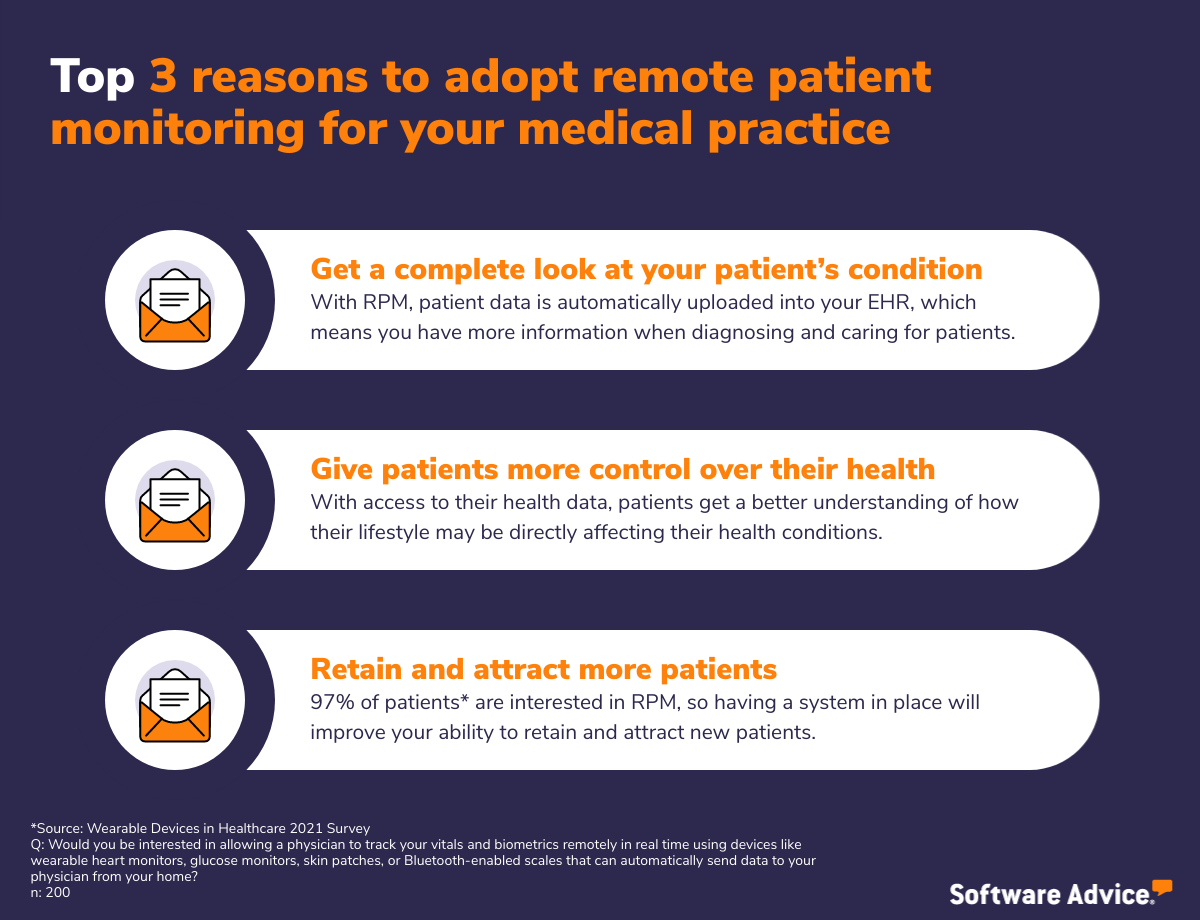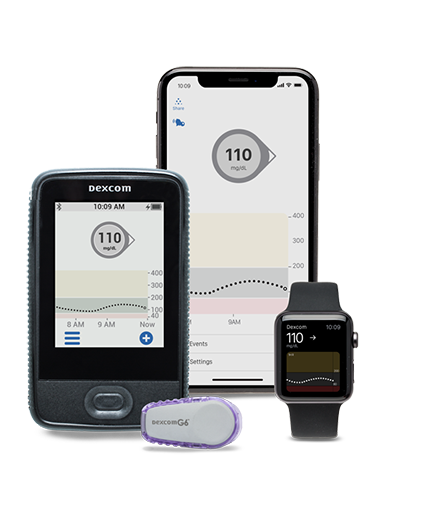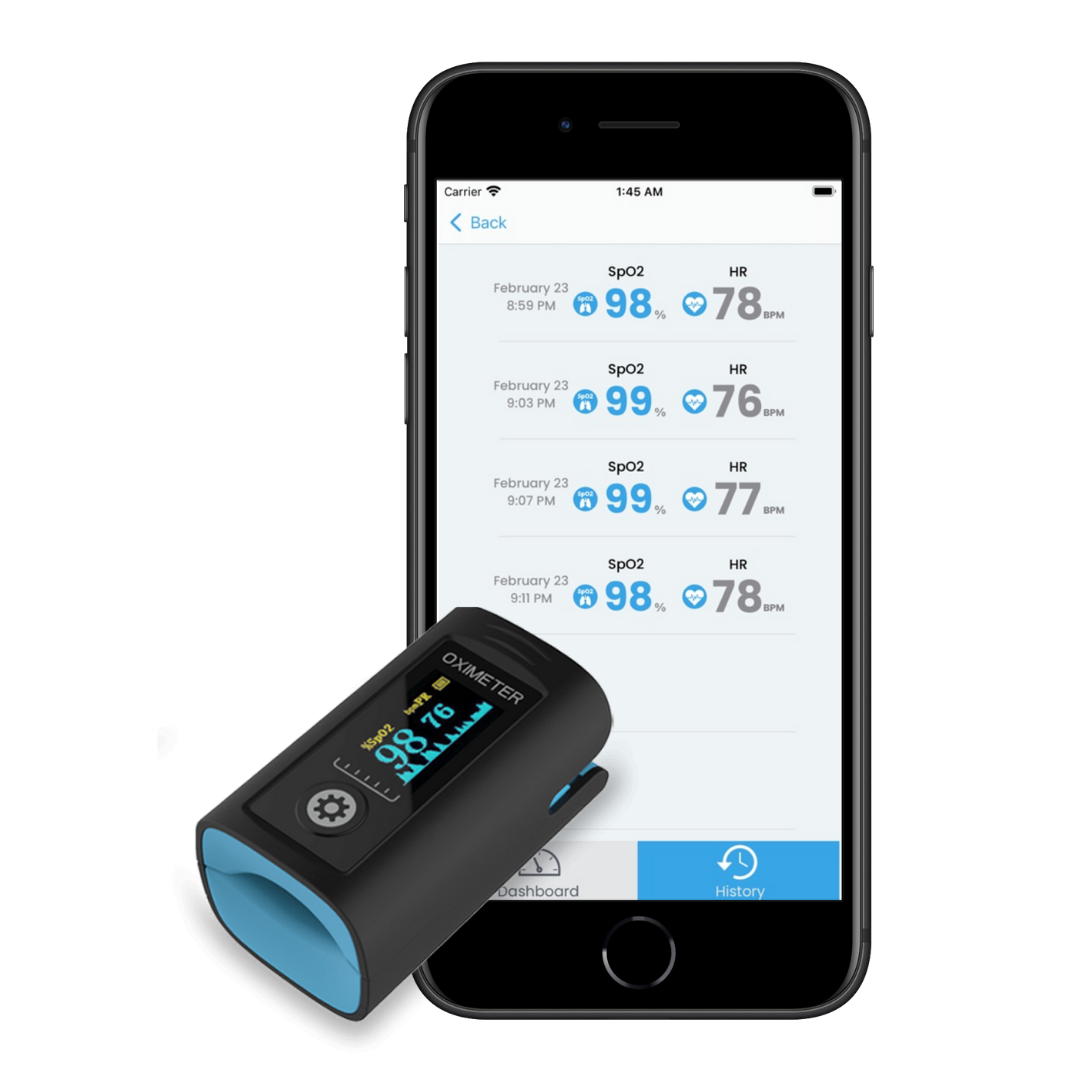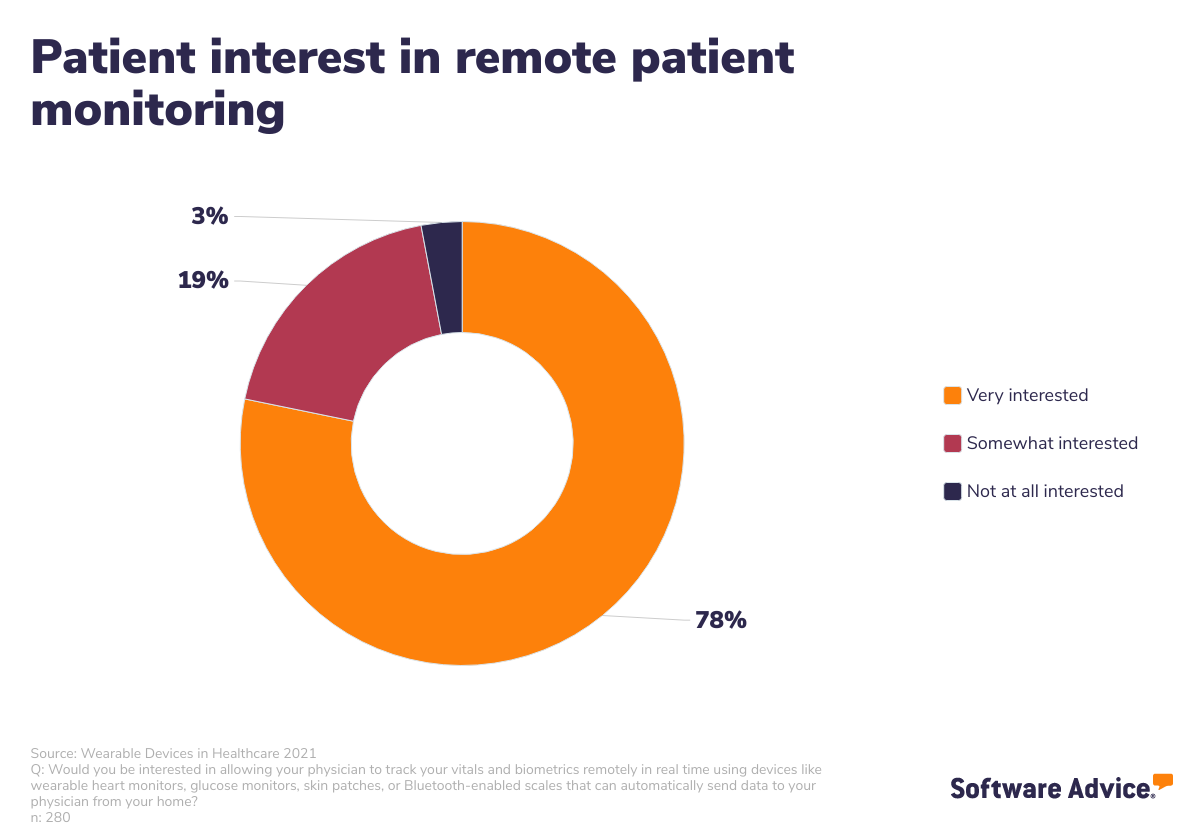What Is Remote Patient Monitoring, and Why Should You Adopt It for Your Practice?
Remote patient monitoring is a healthcare delivery model that uses tech to monitor patients’ health outside of your clinic or practice. Essentially, remote patient monitoring uses electronically transmitted patient health data to assess and monitor patient vitals remotely.
One of the great things about remote patient monitoring is that the only tech required is a medical device that collects and interprets physiological data, such as the heart rate, blood glucose level, blood pressure, respiration rate, body temperature, and blood volume. Not to mention, Medicare reimburses your practice for remote monitoring services just like in-person services.
Two common examples of remote health monitoring devices:
A continuous glucose monitor that checks blood sugar levels in diabetes patients, monitors their disease, and reminds them to take insulin on time.
A digital blood pressure monitor that lets patients remotely send their blood pressure, vital signs, and blood oxygen levels to their physicians.
Adopting a remote patient monitoring system can help your healthcare organization prevent severe, costly health outcomes in patients while also improving the overall health of patients with chronic diseases or ongoing medical conditions.
While there’s more, we’ll be walking you through the three most important benefits of adopting remote monitoring for your medical practice:

Get a complete look at your patient’s condition
Patients may not always be the best at articulating how they’re feeling in the short time they have with you during an in-person clinic visit.
They may not be comfortable sharing the problems they’re encountering every day, or they may think certain things aren’t as important to share. Often, the only data you have on patients’ conditions is what you or your care team takes while they’re at your clinic.

Dexcom’s glucose monitoring devices (Source)
With a remote patient monitoring program in place, patient data can be automatically uploaded into your electronic medical records system, which means you have more information to get started with when creating a plan of action to help patients manage chronic conditions such as diabetes. The extra patient data you collect through remote monitoring can prevent or delay disease-related complications such as microvascular strokes or heart attacks.
Give patients more control over their health outcomes
One of the less obvious benefits of remote patient monitoring is that it helps educate and empower your patients.
With constant access to concrete health data, patients get a better understanding of how their lifestyle may be directly affecting their health conditions. This visibility encourages them to adopt healthier lifestyle habits for healthier outcomes. And healthier outcomes mean lower risks of costly or potentially life-threatening conditions.

Healthmote’s remote pulse oximeter (Source)
For patients with chronic illnesses, the ability to own a part of their health outcomes by having access to personal health data should not be understated or overlooked. Engagement with their health empowers your patients, and having a remote patient monitoring program in place enables that patient engagement for your practice.
Retain and attract more patients
A *recent Software Advice survey asked patients if they are interested in remote patient monitoring, and a vast majority said yes. Seventy-eight percent of patients with chronic conditions said they are “very interested” in sharing their health data remotely with their physicians.

If your healthcare organization has been hesitant to adopt remote patient care, this data might change your mind. The fact is that these days patients are more frequently looking for practitioners who offer remote health monitoring.
In fact, Insider Intelligence estimates 30 million U.S. patients—or 11.2% of the population—will use remote patient monitoring tools by 2024, a 28.2% growth from 23.4 million patients in 2020.
Getting ahead of the curve now will make your practice more marketable to new patients while also helping retain existing patients by improving their overall experience with your practice.
Be a part of the future of virtual healthcare with remote patient monitoring
Remote patient monitoring is just one part of the larger virtual care push that also includes telemedicine and telehealth.
With advancements in healthcare technology, you can now connect with your patients remotely, and the COVID-19 pandemic has made remote health monitoring all the more necessary, especially for patients with chronic conditions.
Looking to start your remote patient monitoring software hunt? We’ve got you covered. Visit our remote patient monitoring software page to read reviews from healthcare professionals like you and compare different software options.
Don’t know where to start? Software Advice can guide you through your software search. In as little as 15 minutes, our software advisors can help you pick the right software for your business needs, so you can feel confident in your choice. Click here to chat with an advisor or schedule a call for free.
Methodology
*Software Advice conducted this survey in August 2021 among 485 respondents to learn more about patient preferences and expectations for personal wearable device data and how it should be used by their healthcare providers. Respondents were screened for their location (United States) and how they kept track of their personal health history.
Note: The applications selected in this article are examples to show a feature in context and are not intended as endorsements or recommendations by Software Advice. They have been obtained from sources believed to be reliable at the time of publication.